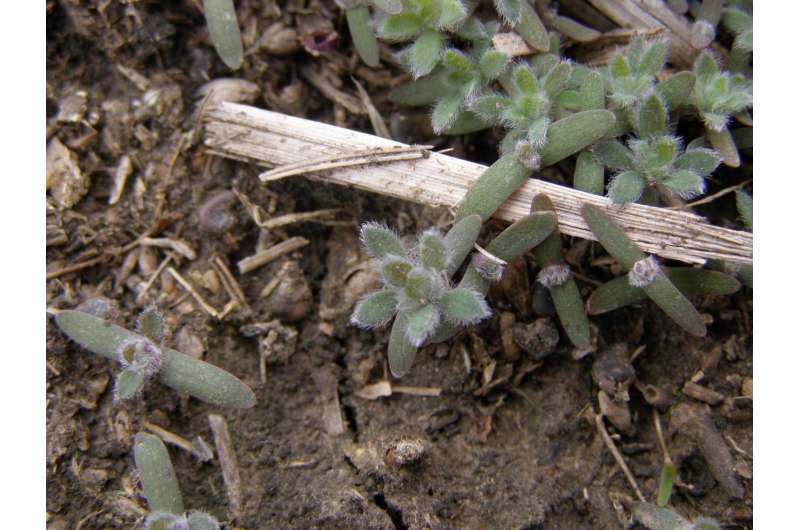New research indicates the importance of early season control of herbicide-resistant kochia

Researchers writing in the latest edition of the journal Weed Science are providing new insights into the control of herbicide-resistant kochia, a weed that competes with both dryland and irrigated crops across the Great Plains states.
Kochia typically begins to emerge in late February or early March before other summer annual weed species. It then disperses its seeds broadly by tumbling across the landscape.
Since the timing of weed emergence and seed persistence in the soil can influence the selection of effective weed control practices, researchers conducted a two-year study to explore kochia emergence patterns and seed persistence. They harvested kochia seed from sites in five Midwest states, buried packets of seed and exhumed them at six-month intervals to evaluate viability.
Emergence densities varied widely across the plots and study years - from as few as four to almost 380,000 seedlings per square meter. Cumulative growing degree days needed for 10% emergence also varied widely. In Kansas, 168 days were needed, but only 90 in Wyoming and Nebraska. Researchers found that more than 95 percent of kochia seed failed to persist for more than two years.
The findings have important implications for weed control. The authors say preemergence weed control should be initiated in the fall or by early February to address the first flush of seedling emergence and seed production. Fall-established cover crops can create a canopy that suppresses the density of kochia emerging in the spring. Early season tillage can also be effective. Researchers found that seeds unearthed during tillage had a very low percentage of viability.
Growers may even want to adopt stale seedbed techniques and allow weed seeds to germinate so they can be treated prior to planting crops. Researchers caution, though, that kochia continues to emerge into mid-summer, which means an extended management program may be needed.
More information: J. Anita Dille et al, Kochia (Kochia scoparia) Emergence Profiles and Seed Persistence across the Central Great Plains, Weed Science (2017). DOI: 10.1017/wsc.2017.18
Provided by Cambridge University Press


















